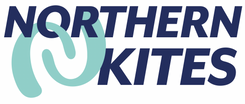How to Read Wind Forecasts for Kitesurfing (Without Getting Overwhelmed)
Let’s face it, wind forecasts can look like absolute chaos when you’re starting out in kitesurfing. Bright colours, a mix of arrows, numbers and graphs… all before you’ve had your first coffee. But learning how to read the wind forecast is a huge part of becoming a confident, independent kitesurfer.
Here’s a handy breakdown you can bookmark for when you’re planning your next session.
Start with Your Go-To Forecast App
There are a few apps and websites we use all the time. Windy, Windguru, and Windy.app are some of the best. Each shows slightly different data, but all tell you the same essentials with options to customise:
Wind direction
Wind speed (typically in knots)
Gust speed
Tide times
Swell size and direction
Temperature and weather
Want to see real-time wind at our home beach? Check out the Wallasey Beach Live Wind Page.
Decoding the Forecast: What to Look For
You don’t need to understand everything at once. Here’s what we look for at a glance:
1. Wind Direction
This tells you which way the wind is coming from, not where it’s going. This one always gets a few head scratches but once it clicks, it’s simple.
Let’s have a look at a few examples:
⬇️ (N) = Winds coming from the North, blowing towards the South
➡️ (W) = Winds coming from the West, blowing towards the East
↘️ (NW) = Winds coming from the North West, blowing towards the Southeast
↙️ (NE) = Wind is coming from the Northeast, blowing towards the Southwest
Remember: the arrow points in the direction the wind is going, but we describe wind by where it’s coming from.
At Wallasey Beach, the best wind directions are coming from the SW ↗️ to the NE ↙️. Look at the Wind Rose above, start at South West and work clockwise to North East, that’s the range of suitable winds for this beach.
You want to avoid offshore winds. At Wallasey, that’s SE ↖️. Offshore means the wind is blowing away from land, making it harder to return if something goes wrong.
Good rule of thumb: Look for wind arrows that point towards the beach. Cross-on or side-on winds are your safest bet.
2. Wind Speed
Measured in knots (kts). For kiting:
10-15 kts: light wind (big kite needed)
15-25 kts: ideal for most kiters
25-35 kts: advanced riders only
Check the difference between average wind and gusts – big gaps mean gusty conditions, which can be tough to manage.
3. Consistency
Smooth bars mean more consistent wind, which usually means a better session.
If the forecast shows bars that are jumping around in colour or wind strength, it could be gusty or unstable. That’s often a sign to hold off or consider a more sheltered spot.
The coloured bars represent wind strength over the day. When the colours are consistent and smooth (for example, staying mostly green or yellow), it means the wind is expected to be steady.
If the colours jump from blue to yellow to green and back, that shows big shifts in strength which can make for tricky conditions on the water.
Tip: Look for consistency in both wind speed and direction. If either changes dramatically over a short window, conditions could be unpredictable.
4. Tides
Some beaches, like Camber Sands or Ainsdale, become unsafe at high tide. Check our Spot Guides for what works when.
Compare Multiple Models
Each model has its own algorithm, so checking 2–3 (like ECMWF, GFS, ICON) helps you spot trends. If they’re all saying 18 knots WSW, it’s likely to be accurate.
That circular wind rose in Windy.app is brilliant for checking direction quickly.
Check for Rain, Temperature & Swell
They won’t always cancel a session, but they do affect your setup:
Rain can flatten wind
Cold temps need thicker wetsuits
Big swell = fun or challenging depending on your level
When in Doubt – Ask!
Forecasts are useful, but experience counts. We’re always happy to help you figure it out, especially if you're unsure what gear to bring or which beach to ride.
Drop us a message, or better yet, join us for a session or lesson at Wallasey Beach with our Kitesurfing School Northern Kites.
Get the Gear to Match the Forecast
Once you understand the forecast, you’ll want the right kite, board and harness to match it. For that, check out our rider-run shop Northern Watersports. We’ve got all the wind-friendly kit you’ll need, and we’re always happy to help you pick the perfect setup.
More Handy Reads:
A Guide to Kitesurfing in Merseyside
Best Wing Foiling Locations in the North West
Ready to put it into practice?
Book your next kitesurf lesson or refresher lesson now.
See you out there,
Adam & The Team









